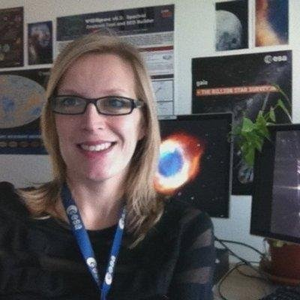Your comments
Dear Laslo,
Following on from this, we have found a computer that has the same issue as you, and it looks like the newer version of aladin-lite solves the problem. Therefore, I hope you also do not see the bent diffraction spikes here? :
https://jsbin.com/dumibovegu/1/edit?output
Do let I know if you do!
In the meantime, we will update ESASky with the latest aladin-lite version.
Many thanks for reporting the problem!
Best regards,
Deborah
Dear Laslo,
Many thanks for the screenshot. We can't repeat the issue with our versions of Edge and Firefox, therefore, the team has created two jsbin pages that should help us figure out if the issue will be resolved by upgrading the aladin-lite version (the tool we use to display the sky).
Using the latest version of aladin-lite: https://jsbin.com/dumibovegu/1/edit?output
Using the current version that ESASky is using: https://jsbin.com/lijobisafo/1/edit?output
Could you open both links and click on "Run with JS" and let us know which of them, if any, shows the same issue that you have in ESASky?
Many thanks and regards,
Deborah
Dear user,
We can't see any bends or corners in the diffraction spikes when we load the same regions in ESASky. Could you try refreshing your window, or try in a different browser, and if the problem still persists, send us a screenshot?
Many thanks!
Deborah, on behalf of the ESASky team
Many thanks for your suggestion, I'm assuming you'd like similar behaviour to the World Wide Telescope: https://worldwidetelescope.org/ ?
We'll add it to our backlog of tickets.
Best regards,
Deborah
Dear Nadia,
ESASky has an automatic system set up with the ESA Webb Outreach team to show most of the Webb PR images in the Webb Outreach Images feature of ESASky. I believe these images have not been selected to be shown in ESASky because they have been annotated with the star names and planet letters.
We'll pass your suggestion on to the ESA Webb Outreach team!
Many thanks for your feedback and we're so pleased you're enjoying the tool!
Best regards,
Deborah
Customer support service by UserEcho


Hi,
This fix has just been released in ESASky.
Many thanks for reporting it!
Best regards,
Deborah